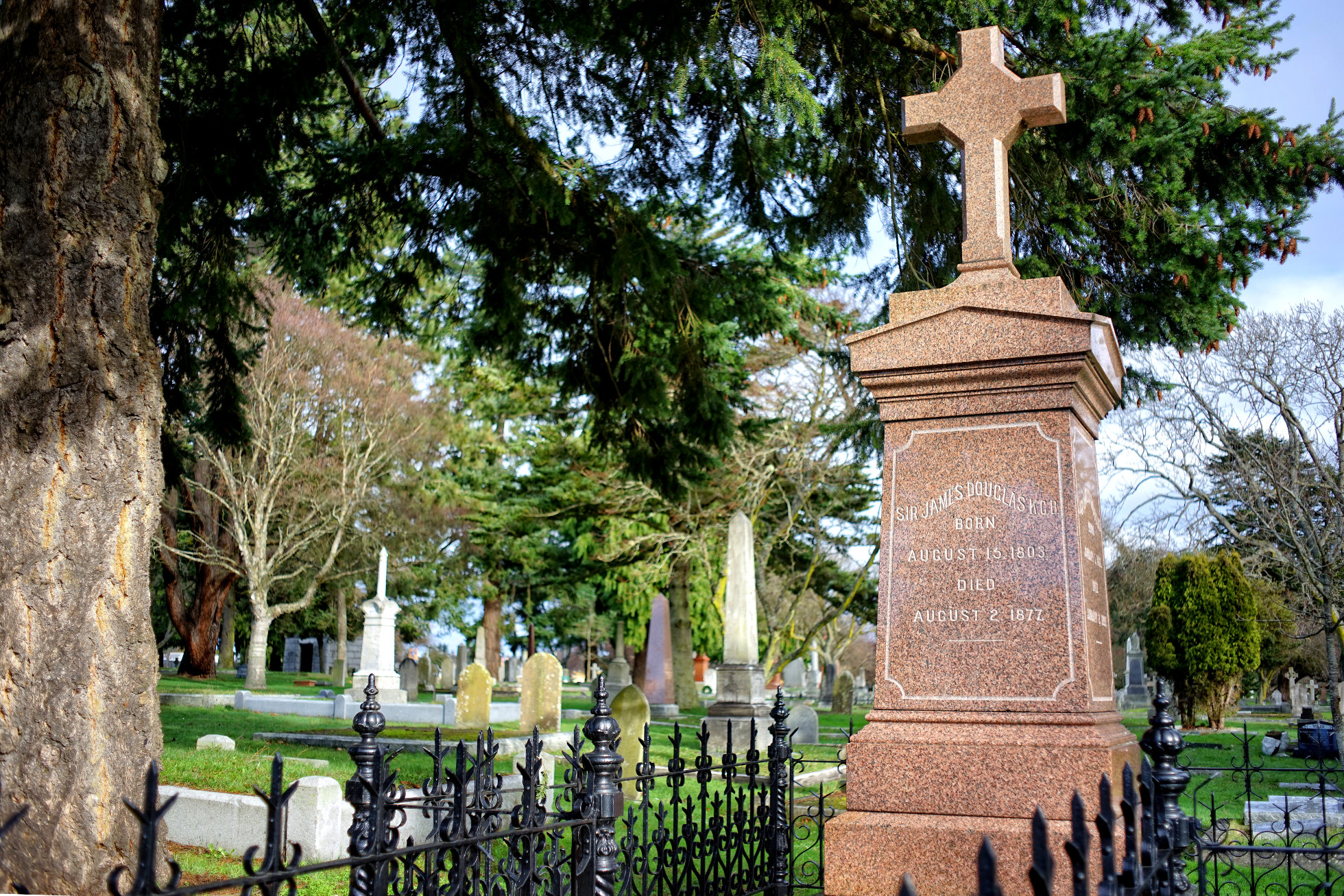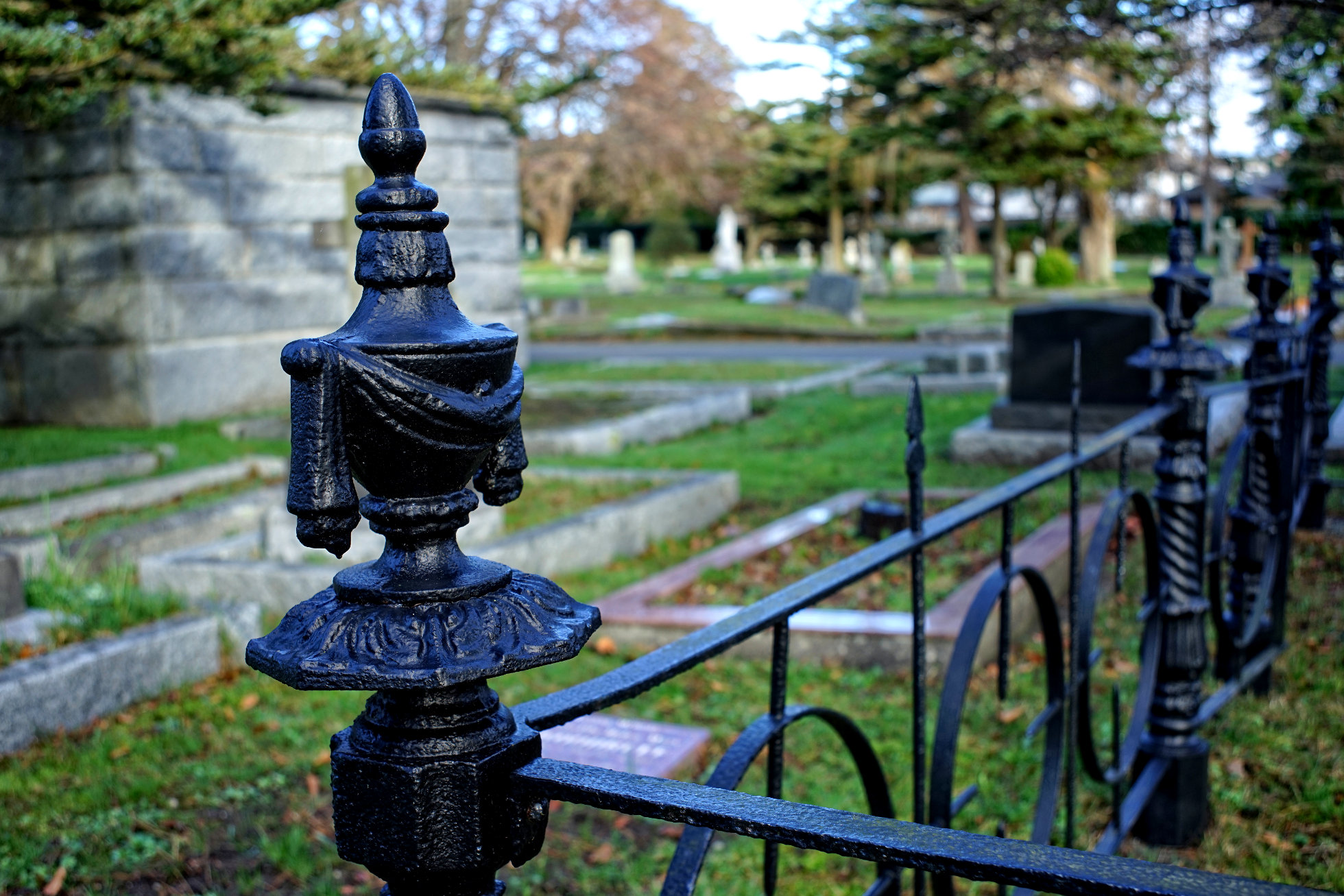| I mentioned on Saturday that the Ross Bay Cemetery holds many Victoria citizens who were prominent in the early days of the city. Probably none is more significant than Sir James Douglas, who founded the city and governed the colony during its early days. He was a Hudson's Bay Company factor as was Alexander Ross, who gave his name to the bay and the cemetery that faces it. A number of the older graves such as Sir James' are surrounded by wrought iron fences. This ironwork is often quite ornate. |

Monday, February 2, 2015
Ross Bay Cemetery - Sir James Douglas
Saturday, September 15, 2012
Sir James Douglas, KCB
Thursday, August 25, 2011
A Closer Look 8 - Sir James Douglas, KCB

Tuesday, August 9, 2011
A Closer Look 3

| On the right is Sir James Douglas, often called "The Father of British Columbia," since he was the founder of Victoria and the first Governor of the colony of British Columbia. You can read all about him in Wikipedia. Douglas founded Fort Victoria in his capacity as Factor of the Hudson Bay Company. He became Governor of the expanded colony of British Columbia when it was in danger of becoming part of the USA due to its popularity arising from the discovery of gold. |  |
 | To the left is Sir Matthew Baillie Begbie, The first Judge of the Supreme Court of the Colony of British Columbia. Begbie traveled throughout the colony on horseback, dispensing justice where it was needed and upholding the laws during the tumultuous gold rush days. |
Sunday, November 29, 2009
Church Of Our Lord - Living History
 No church here embodies the history of Victoria like the Church Of Our Lord. Yesterday's post of the Eliza Harris window only weakly suggests the associations of this church with so many of Victoria's early citizens. Two of the windows at the far end in this photo were donated in memory of Sir James Douglas, Victoria's founder, and his son. There are two prayer desks in front of the altar, one dedicated to a sister of artist Emily Carr who mentions the church in her memoir, "The Book of Small."
No church here embodies the history of Victoria like the Church Of Our Lord. Yesterday's post of the Eliza Harris window only weakly suggests the associations of this church with so many of Victoria's early citizens. Two of the windows at the far end in this photo were donated in memory of Sir James Douglas, Victoria's founder, and his son. There are two prayer desks in front of the altar, one dedicated to a sister of artist Emily Carr who mentions the church in her memoir, "The Book of Small."Opposite is another prayer desk donated in memory of a daughter of Dr. John Helmcken, another prominent early Victorian. It is not difficult when sitting beneath the wonderful ceiling of this church to imagine a Sunday in the 19th century when the Douglas family (who occupied the first pew) would be sitting here along with the Helmckens and the Carrs and many other citizens whose names are enshrined in the streets and buildings of this city.




